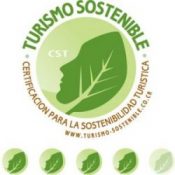In September 2009 Bahia Aventuras teamed with Thinking Beyond Borders for the second year in a row to help facilitate the best gap year program in the world! Thinking Beyond Borders gap year program is designed for students to explore international development through global service learning and academic study. The organization has the mission:
- To empower youth as agents of proactive change by developing consciousness of global issues.
- To translate learning into action.
The Ideal start to a Gap Year Program
Thinking Beyond Borders program orientation in Uvita – Bahia Ballena, Osa, Costa Rica is an opportunity to prepare for eight months of service learning and traveling throughout South America, Africa, Asia and the USA. During the orientation students begin exploring the curriculum by learning about various development issues and why they are immediate problems in each country. They also learn how to travel in a culturally sensitive manner, how to communicate with people when you don’t speak the same language, and how to immerse yourself into a new community. Finishing out the orientation, students learn the safety protocol, including how to prevent minor illness, general traveling “do’s and don’ts, and good conduct to keep yourself healthy and safe. The orientation program challenges students to develop new perspectives on themselves and the world. Set goals to reach new levels of personal and global consciousness. Identify strengths and pinpoint areas to improve. Engage in team building and leadership activities that unite this incredible and talented group of individuals.
Bahia Aventuras and Thinking Beyond Borders
Together with Bahia Aventuras Team Members and local community leaders, the Thinking Beyond Borders students attend workshops about local community economic development. Connect with nature and create powerful experiences while participating in whale watching, snorkeling, and dolphin encounter boat tours in the Marino Ballena National Park. Learn yoga and surfing while living for 10 days where the rainforest and the ocean come together. They hike through primary and secondary rainforest, swim under waterfalls, play beach soccer and reflect on the journey to come while watching the sunset over the famous Punta Uvita Whale Tail.
Check out the album of Thinking Beyond Borders 2009-10 student photos from the 11 day orientation in Costa Rica!




